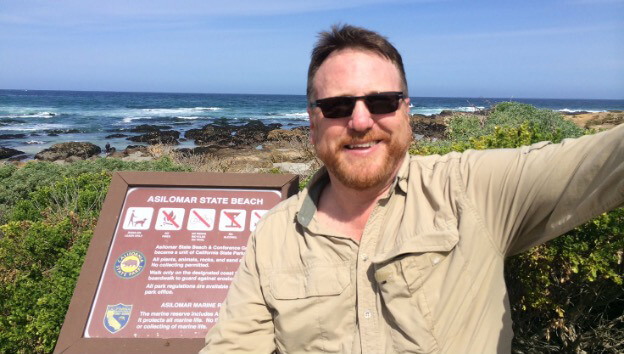Daniel Vigneron, PhD Spotlight
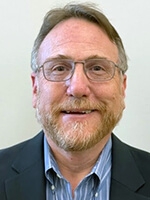
Across three decades at UCSF, Dan Vigneron, PhD, has earned international recognition in several domains of team science, especially advances in molecular imaging using hyperpolarized carbon-13. Looking back at his career trajectory, a pivotal moment for Vigneron was the opportunity to learn from the influential pharmaceutical chemist Max Tishler as an undergraduate at Wesleyan University. Tishler observed, in the early 1980s, that a great challenge facing pharmaceutical chemistry was not knowing exactly how patients metabolized a particular medication, with the insight that imaging was key to answering those questions.
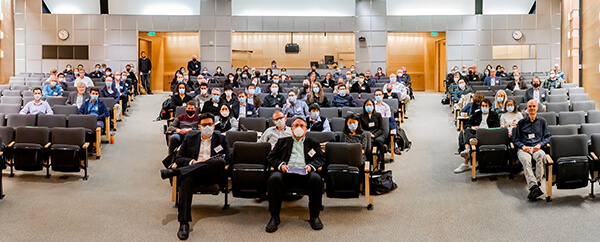
Taking that early cue from his example, Vigneron recalls, “I have focused much of my research career to revolve around the central question, how do we know if a drug is working quickly or at all and how do we know if the drug is hitting its intended target?" A locus of Vigneron’s approach to team science, and his response to the challenge Tishler posed, is the Hyperpolarized MRI Technology Resource Center (HMTRC), founded in 2011 with funding from the National Institutes of Health, and which Vigneron serves as director. Hyperpolarized carbon is an emerging, non-invasive imaging method that allows rapid, targeted insights into dynamic metabolic and physiologic processes with significant potential to improve patient care. Vigneron notes, “The key advance is the ability to study metabolism and the biochemistry and, even to a degree, microbiology inside of people and to be able to do that to help with monitoring therapy, even choosing and guiding treatments. We are now guiding biopsies of prostate cancer to regions that show increased metabolism.” Since its founding, the HMTRC has accomplished a great deal, including support for 20 external projects at different sites around the country, and another 15 internationally, a recent 5-year renewal of NIH funding, 239 publications and counting, 149 trainees over the years, clinical trials and first-in-human studies, annual research conferences that draw team science collaborators from around the world, and more.
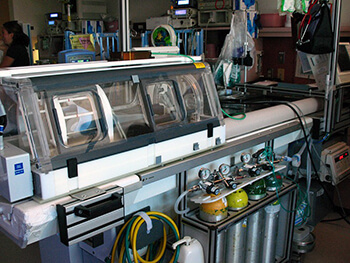
Early in his career, Vigneron worked on neonatal and newborn brain injuries, on prostate cancer, brain tumors, and neurosurgery. Through a collaboration with PI’s emeritus faculty member Jim Barkovich, MD and Donna Ferriero MD, he led the bioengineering aspects of developing and applying the first MRI compatible incubator which enabled studies on newborn brain development, its metabolism, and changes in response to injury. This work led to foundational papers on brain development in newborns with heart disease and white matter tract maturity in premature newborns. This project is now led by former trainee and now professor, Duan Xu PhD. Throughout his research, Vigneron has leveraged the power of collaboration to enhance the potential of scientific discovery. “My work has always been team science, working with groups both in our department and with many other departments and industry to disseminate new MRI technologies."
In his day-to-day life – whether leading a lab meeting or organizing a conference or attending to the arcane details of grant management for multi-sited projects – Dan is perhaps best known to his colleagues and dozens of trainees over the years as a hands-on educator and a generous mentor and career sponsor. In 2022, Dr. Vigneron received our department’s Outstanding Faculty Mentoring Award, where nominators noted his "unlimited patience in providing astute and savvy counsel about all aspects of research and career development” and his “inspirational way of explaining strategies to navigate through the many challenges we all face in our academic careers.”
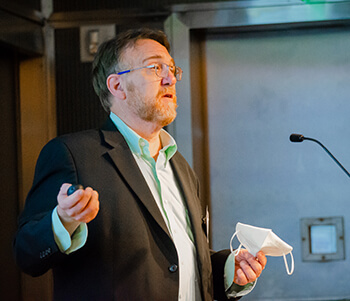
Reflecting on the value of a mentor and sponsor, Vigneron noted that a particularly rewarding aspect of working with trainees is using his experience to ease the way for other scientists to conduct their work more easily. “The rules we work under can seem very burdensome when you don’t understand their rationale or effects, so one of my key contributions is to help to clear the way for others. I spend a lot of time doing all sorts of different things that are mostly just paperwork, jumping through hoops. Each of our progress reports for the HMTRC is almost 300 pages. The grant was six hundred pages long. My secret is to do paperwork and requirements as efficiently as possible.”
When talking about his mentoring style, Vigneron emphasizes customizing the education style to the individual student. “People have different needs at different stages of their educational and career development. At first, I might start out as a teacher and instructor to help them learn the basics and gain familiarity, then I become a coach to help them discover the next direction, then I am a manager creating an environment of support for them, and finally I am a cheerleader doing what I can to boost their confidence. These stages are not linear, and at any time students may need cheerleading, managing, coaching, or training through the different phases of their careers. Science is hard work. You always want to make sure you keep people's confidence up and keep them motivated and excited about what they're doing.”
Dr. Vigneron takes pride in the fact that some of his prior graduate students are now faculty in the department, such as Duan Xu, PhD, Peder Larson, PhD, and Susan Noworolski, PhD, and others have gone on to academic roles elsewhere. He co-mentored Duygu Tosun, PhD, Yan Li, MD, PhD, and Michael Ohliger, MD, PhD, as well as aiding all Junior PhD faculty during his time as Mentoring Lead from 2016 through 2020. Observing that mentoring often comes full-circle, Vigneron remarks, “Mentoring is always a two-way street. You can always learn so much from your trainee. And now, those people who I have mentored in the past mentor me right back.
In addition to personal mentorship, Dr. Vigneron now uses his expertise to help develop the research environment as a center director and as a PI overseeing eight grants. “A good leader makes each person on the team feel like the most important, because in some area, they are. That ranges from the technologists to the students, to the engineers, to the faculty, both radiologists and PhD scientists, and all the employees that are in or outside of the department.”
Administration and committee work is a valuable though rarely eye-catching role that faculty perform, and often in the course of this work senior faculty model technical and organizational know-how for mentees. In one such behind-the-scenes role, Vigneron co-chairs the department’s Safety and Compliance Committee with Michael Evans, PhD. He observes that “I think of it as a policy and education group, not a policing group. When something goes wrong, you don't blame individuals, you fix problems, make new policies, and then move forward. When we started the PET-MR program at China Basin, people working on PET studies didn’t know much about MR safety and MR researchers didn’t know about radiation safety. I'm proud that now we have a very sound structure, we have completely restructured and have an effective committee with well-organized responsibilities. And I’m happy that now the committee does not have many incidents to respond to.”
Outside of work, Dan Vigneron finds comfort and joy with his wife, two kids, and three dogs. One of the dogs, Willow, is a service animal for Dan’s daughter. Willow can detect low blood pressure and go fetch a bottle of Gatorade, and is also trained to perform deep pressure therapy in the event of fainting. Dan’s daughter took a lead in personally training Willow along with professional service dog trainers and is now herself studying Animal Science at UC Davis.
